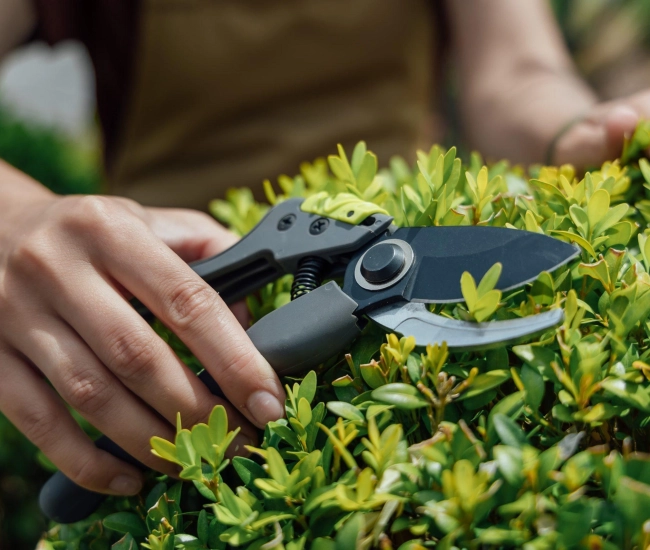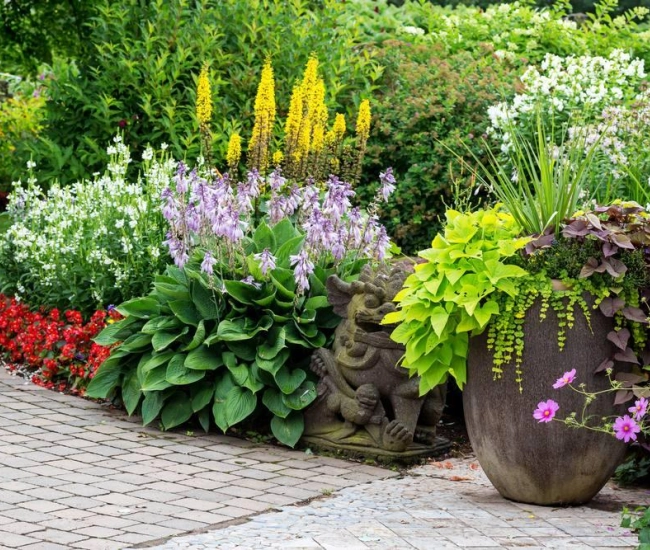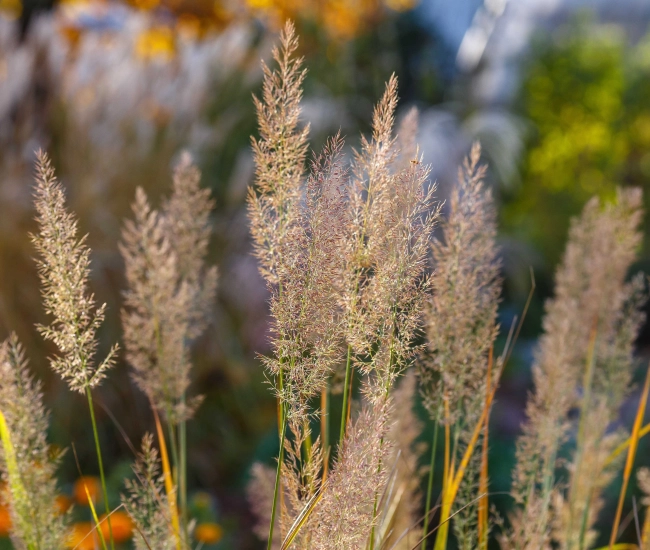
Text by Hélène Baril: Horticulturist, author & speaker
__
This beautiful shrub, present in many Quebec landscapes, is continuously gaining popularity. Its great diversity, increasingly long and early blooming, reliability in cultivation, and the wide range of available varieties make it a garden essential.
For an informed choice
Hydrangea varieties are distinguished by their particular botanical characteristics, namely the shape of their foliage, flower, and habit. There are several types of hydrangeas, but the most popular in Quebec are: H. macrophylla (Hydrangea), H. paniculata, H. quercifolia, H. petiolaris, and H. arborescens. Here's how to easily differentiate them:
Hydrangea macrophylla (Hydrangea)
Large-leaved hydrangea
• Inflorescence in more or less flattened balls, blue (acidic pH) or pink (alkaline pH)
• Large, thick, light green foliage, slightly heart-shaped
• Low hardiness (zone 5-6)
• Requires winter protection
• Requires acidic soil to maintain its blue color
Hydrangea paniculata
Panicle hydrangea
• Large cone-shaped flowers, white then pink
• Small, matte green leaves, thin and rough, slightly serrated
• Good hardiness (zone 3-4)
• No winter protection necessary
• Adapts to most soils
• Available in tree or shrub form
Hydrangea quercifolia
Oakleaf hydrangea
• Cone-shaped white flowers
• Oakleaf-shaped dark green leaves turning purple in the fall (main interest)
• Low hardiness (zone 5-6)
• Requires winter protection
• Adapts to most soils
Hydrangea petiolaris
Climbing hydrangea
• Corymbs (flattened) blooming
• Shiny, delicate, and finely serrated foliage
• Good hardiness (zone 4-5)
• Plant sheltered from cold winds
• Adapts to most soils. A compost addition at planting is beneficial
Hydrangea arborescens
Tree hydrangea
• Large globular white or pink inflorescences
• Oval, dark green foliage, slightly heart-shaped
• Good hardiness (zone 3)
• No winter protection
• Adapts to most soils. A compost addition in spring is beneficial
Pruning hydrangeas, a little...a lot...?
Whether done in spring, fall, or immediately after blooming, pruning hydrangeas is necessary to ensure the vigor and strength of the stems. Since it varies according to the hardiness of cultivars and species as well as the period of floral bud production, it is important to do it at the right time.
Species — When to prune
- Hydrangea macrophylla (Hydrangea)
Prune dead and frozen parts in spring. Keep 3 buds on the stems. Blooms on old and new wood. - Hydrangea paniculata
Prune one-third of new shoots in spring or late fall. Blooms on old and new wood. - Hydrangea quercifolia
Lightly prune in spring. Remove dead or too weak stems. Blooms on old and new wood. - Hydrangea petiolaris
Prune half of new shoots after blooming. Blooms on old and new wood. - Hydrangea arborescens
Prune severely to 15 cm from the ground early in spring or late in fall. Blooms on new wood.
Tips and tricks
Are your tree hydrangea leaves fused?
This is the hydrangea binder, a small nocturnal moth that lays eggs on the leaves. The larvae fuse the leaf edges to protect themselves from predators. What to do? Gently separate by hand and then destroy the caterpillar. As a preventive measure, cut the stems close to the ground in spring.
Some varieties to discover
- Exposure: Sun, partial shade
- Zone: 3
- Blooming: July to September (pink)
H. arborescens Incrediball ‘Storm Proof’
- Exposure: Sun, partial shade
- Zone: 4
- Blooming: July to September (white)
- Exposure: Sun, partial shade
- Zone: 3
- Blooming: July to September (white then dark pink)
Tips and advice



